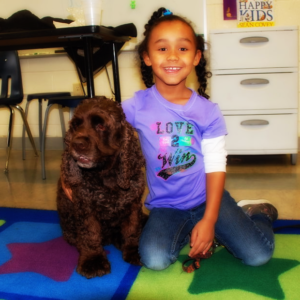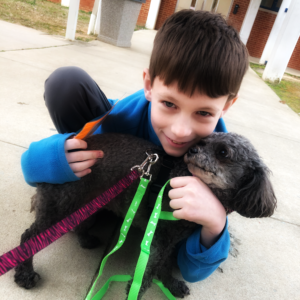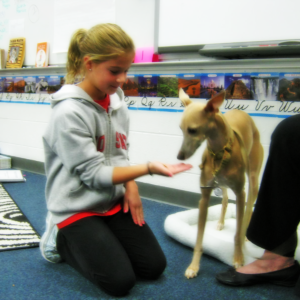PetPalsNC, Inc. promotes and supports the use of animal-assisted therapy and activities for K-12 students to enhance academic, social, emotional, and behavioral growth.
We currently serve multiple schools in North Carolina within Orange County, Chapel Hill – Carrboro, and Durham districts . . . and we have numerous requests for new teams, so we hope to raise funds needed to continue our growth.
We do not certify or train therapy animals; instead, we recruit certified pet therapy teams to work with children and adolescents in schools, and we offer information, support, and guidance to the handlers as well as to the participating schools. Our goal is to provide animal-assisted intervention that targets a student’s specific need or challenge.
School counselors or social workers serve as PetPalsNC liaisons in each participating school. They or other school professionals refer students to work with the dogs, help to plan the interventions, and they might direct the sessions, while the handler’s role is to facilitate the interaction between the dog and the student.



